Power Flush Cost
Last updated 23rd March, 2025
Want to figure out a power flush cost?
Here you'll find power flush prices for different houses and number of radiators so that anyone can calculate a figure on how much it will cost them.
Power flushing costs on average between £300 and £500.
Read below for all the central heating power flush details...
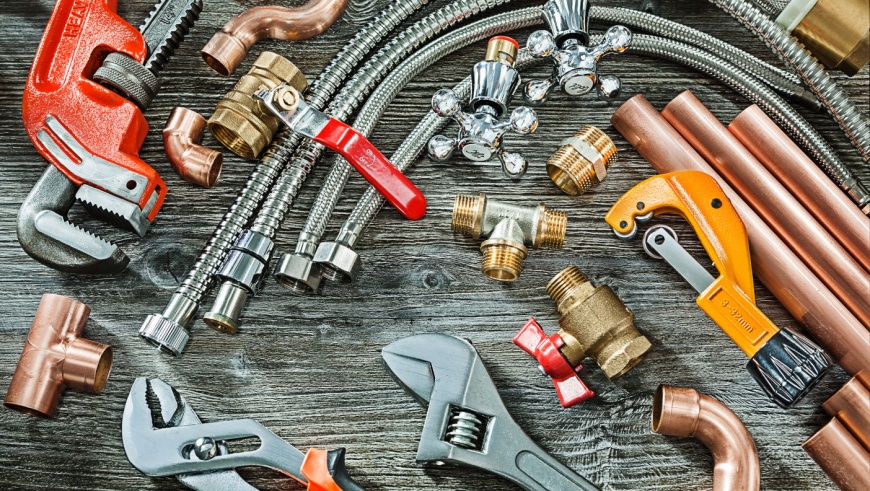
How Much Does a Power Flush Cost?
This article is all about power flushing a central heating system and part of our series into the costs charged by gas engineers and plumbers.
What's the cost on average then?
The average cost to power flush your central heating system is typically around £300 to £500 with the price depending on a few factors, such as the size of your home and the number of radiators in your house.
To give you an example, if you have a two-bedroom home you will typically have around 6 radiators, which would cost around £350 to power flush.
This price may also vary depending on your location, with small businesses charging from £350 in the north of England and up to £425 in the south, however, you can pay up to £600 for a large company located in London.
Table of Contents
- How much does a power flush cost?
- How much is power flush labour?
- What does a central heating power flush entail?
- What impacts central heating power flush costs?
- Additional power flush costs
- Can I power flush my central heating myself?
- Why do you need a central heating power flush?
- What issues can power flushing resolve?
- 10 benefits of having a power flush
- Other heating system problems/repairs
- Power flush vs chemical flush
- What heating system can’t have a power flush?
- FAQs
- How to find and hire a plumber to powerflush your system
- Sources
Central Heating Flush Prices
Below are some estimated costs of hiring a tradesman to power flush a central heating system:
| House Type | Number of Radiators | Avg. Cost | Duration |
|---|---|---|---|
| 2-bedroom flat | 4 | £300 | 1 day |
| 2-bedroom house | 6 | £350 | 1 day |
| 3-bedroom flat | 8 | £400 | 1 day |
| 3-bedroom house | 10 | £450 | 1 day |
| 4-bedroom flat | 11 | £475 | 1 – 2 days |
| 4-bedroom house | 15 | £500 | 1 – 2 days |
Power Flush Cost Breakdown Calculator
Individual Costs For Hiring a Plumber To Power Flush a System In a 3 Bedroom Semi-Detached House With 8 radiators - Total cost: £400
Materials
£80
Tradesmen
£300
Waste Removal
£20
How Much Is Power Flush Labour?
A plumber will often charge around £50 to £60 per hour. To flush your system it shouldn't take the tradesman any longer than a day but this will depend on the amount of work that's required, although the cost is usually based on the number of radiators in the home, so in larger homes with more than 10 radiators it can take up to 2 days.
If you have a combination boiler or a sealed system, the job will only take around half a day, as there is no need to cap off the cold feed cap and expansion pipes.
What Does a Central Heating Power Flush Involve?
Before commencing with the actual job your plumber will start by firing up the boiler and checking the radiators for any cold spots by taking the temperature of each radiator.
Then once all the radiator valves are removed or opened and dust sheets placed over carpets and furniture for protection, the power flushing machine can be connected by disabling radiators and connecting hoses to the pipework.
There are multiple stages to a successful power flush:
First Flush
The first flush involves the use of a power flushing machine which uses flushing chemicals, a non-acidic debris mobiliser, a scale and corrosion inhibitor, a boiler noise silencer, leak sealer, and neutralising crystals.
All of these chemicals will be inside the power flushing machine which is attached to the boiler using a pump.
The initial flush usually takes around 20 minutes, and afterwards, each individual radiator is then isolated and flushed while a rubber mallet is used to help loosen up any sludge inside.
Second Flush
The second flush again cleans all radiators individually and the fluid is reversed back and forth until the water is clear on all radiators.
This helps to remove any further sludge left in the system.
Final Steps
Usually, one further full central heating system flush is then undertaken until the water is free of any sludge.
The final step is to add an inhibitor and circulate it through the system, before refitting the radiator valves.
If the power flush is successful, then you should notice that the temperature of your radiators is more in line with expectations. However, if you have other issues that needed to be resolved, then it is important that the system readings are checked.
Readings following a successful flushing should be within 10% of each other or no more than 20%, as anything above that means there is still residue in the system.
At the end of the visit, the heating engineer will provide a certificate of completion to confirm that your central heating system has been power flushed correctly.
What Impacts Central Heating Power Flush Costs?
There are various cost factors you need to consider when pricing up a power flush for your central heating system. This includes the size of your home, as the larger your home is the more radiators you will have.
For example, a 2-bedroom flat will typically have around 4 radiators which should cost around £300, while a 4-bedroom house with up to 15 radiators can cost around £500 These prices may vary depending on the extent of the job, as it could take up to 2 days to power flush a radiator with a large build-up of sludge.
The size of the radiators may also affect the cost, as larger radiators will take a lot longer to clean.
Location will also play a part, with heating engineer prices generally higher in London and other large cities. Unfortunately, these additional costs based on the location of your home can't usually be avoided.
Additional Power Flush Costs
Along with the cost the power flushing, you may have to pay tradesmen to complete other tasks, including:
Radiator Replacement Cost
Replacing your radiators may be necessary if they are extremely blocked up.
This may be a cheaper option depending on how many radiators you have in your home, although the average cost of replacing a radiator is around £270 to remove and replace a 1200mm double panel standard radiator with no extra pipework.
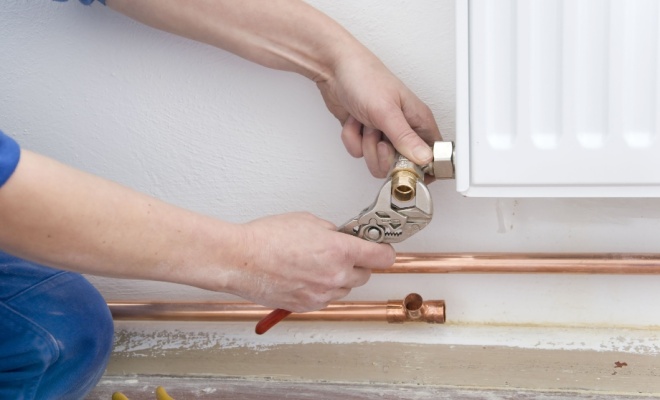
However, if you have a cast iron radiator, you can expect to pay up to £500 for replacement.
Pipework Replacement Cost
You may also need to pay out for the supply and installation of new pipework, which can cost anywhere from £230 for a small 2-bedroom bungalow up to £865 for an average 4-bedroom house.
The price will depend on the type of pipes you choose, with the most popular options including copper and steel. The price for pipework measuring 15mm is around £6 per square metre for copper pipes and £4 per square metre for steel.
Besides the cost, there are also other factors you need to consider before deciding on the right pipework for you. To help you decide, here is a list of pros and cons of both copper and steel pipes.
Copper Pipes
Pros:
- ✔ Extensive fire-resistance.
- ✔ Prevents the production of toxic gases.
- ✔ Its biostatic quality prevents bacteria growth.
- ✔ Installation is easier as copper bends well.
Cons:
- ✖ Cannot withstand cold temperatures.
- ✖ When frozen the pipes can split.
- ✖ Copper is an expensive option.
- ✖ Can also be costly to repair and maintain.
Steel Pipes
Pros:
- ✔ Steel pipework can last a lifetime.
- ✔ Cost-effective investment.
- ✔ Can withstand both hot and cold temperatures.
- ✔ Steel pipes remain intact in freezing conditions.
Cons:
- ✖ Steel is not easy to install.
- ✖ Not as flexible as copper.
- ✖ Steel plumbing must be galvanized to prevent rust.
- ✖ Galvanization can cause health issues.
Boiler Repair or Replacement Cost
If a power flush does not work, then you may have to pay out for a boiler repair. Which can cost anywhere from £150 for minor repairs such as a replacement fan to £400 to replace a heat exchanger or other extensive repairs.
If your boiler is beyond repair, then you may have to pay out for a new boiler. The cost of a new boiler installation varies depending on the size of your home and the type of boiler required. There are numerous boilers to choose from, including:
Conventional Boiler Cost
A conventional boiler also known as a regular boiler uses both hot and cold water storage tanks which are normally stored in the attic. The cost of this type of boiler ranges from £400 to £1,500.
Combination Boiler Cost
A combination or combi boiler is usually priced around £500 to £2,000. This features a central heating boiler and a high-efficiency water heating in one compact unit.
System Boiler Cost
A system boiler is similar to a conventional boiler as they both need to store hot water; however, this type of boiler takes the water supply from the mains itself, which is produced for a storage cylinder. The cost of this is around £1,000 to £2,500.
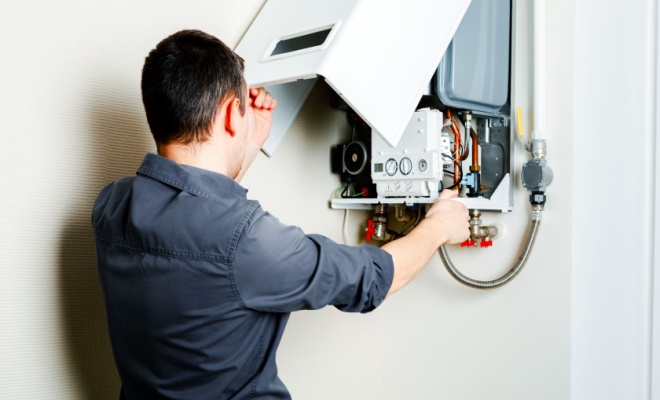
Condensing Boiler Cost
A condensing boiler costs around £1,300 to £2,500. This is effectively a water heater which is fuelled by either gas or oil. This is a high-efficiency boiler which condenses water vapour in the exhaust gases to prevent waste.
Electric Boiler Cost
Electric boilers function the same way as gas boilers, although they use electricity to heat the water. These are normally used in households that only use electricity and tend to cost around £1,500 to £2,500.
Biomass Boiler Cost
A biomass boiler is one of the most expensive options costing around £7,000 to £13,000. This type of boiler is powered by biological matter, such as logs, wood pellets, or chips which are burnt and outputted to heat your home.
TRV Replacement Cost
In the event a power flush fails, you may want to get your thermostatic radiator valve (TRV) checked, as you may need to get it replaced. This cost will depend on the type of installation you need, for example, the tradesman may need to empty the radiator and freeze the tail in order to fit the TRV, which will cost around £120 for half a day’s work.
However, you could pay up to £350 if your whole system needs draining and TRV’s need to be fitted on all radiators, which is usually completed in a day.
Descaler Chemical Cost
To prevent a build-up of rust on your heating system, you could pay for additional descaler chemicals which will stop the rust in its tracks. A typical descaler product should cost from £4 per litre, although you could pay up to £15 per litre for a stronger solution.
New Central Heating System Cost
Sometimes the best way to fix a central heating problem will be to replace the whole system. This will likely include a boiler replacement and TRV replacements, but it may also include replacing radiators and pipework or adding energy efficiency improvements to your home.
A professional will be able to advise on central heating installation costs and what improvements may benefit your property.
Can I Power Flush My Central Heating Myself?
Power flushing should typically be left to the professionals.
It is an extensive job that involves the use of expensive equipment such as a power flushing machine to decontaminate your central heating system and remove sludge and debris.
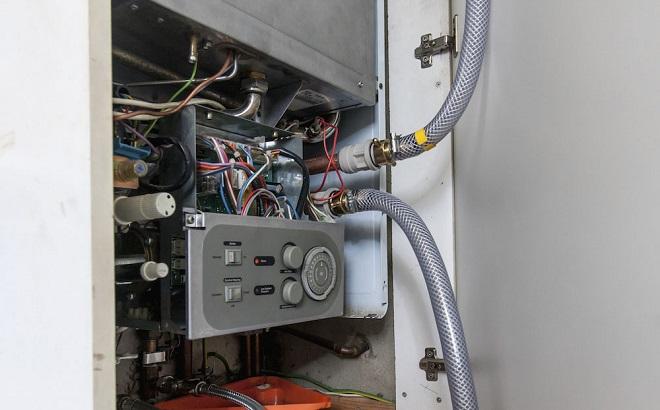
The process also involves the use of potentially dangerous chemicals and other substances.
Common products used during a power flush include descaler chemicals, sludge and corrosion debris mobilisers and dispersants, scale and corrosion inhibitors, system seals, and neutralising crystals for post-flushing. These can be costly and dangerous, so they are best handled by professionals who understand exactly how to use them and where to put them.
Professionals will also understand the exact processes that are required for different types of boilers and radiators.
All power flush cost estimates are based on the skill and experience required of the heating engineer. If you’re not experienced then you should avoid performing DIY power flush, as this could cause more problems or you may end up blocking up your system even more.
This could result in additional costs for extensive repairs or even replacement.
Why Do You Need a Central Heating Power Flush?
Power flushing is a technique used to clear any sludge within a central heating system from the pipes, radiators and heat exchangers.
Undertaking a power flush can help pipes and radiators to get hotter more quickly. Thanks to less stress on the boiler, heat will be distributed more evenly thoroughout the home and general inefficiency will be reduced.
Improving Boiler Efficiency
Excessive sludge in the system can cause central heating boilers to fail early. The latest efficient condensing boilers, in particular, are really sensitive so it’s highly recommended to do a full central heating system power flush before installing a new boiler.
There is no point in paying for an expensive new boiler that will end up failing early due to excessive sludge, any savings made due to the more modern and efficient boiler will be lost due to the shortened life and replacement cost.
In addition, many boiler manufacturers will not honour claims on any new boiler if the system hasn’t been recently power flushed.
To ensure your heating system is functioning properly, you should have it power flushed every 5 to 6 years, although those with a high-quality heating system may prefer to have it performed every 8 to 10 years.
Having a system power flushed regularly will also extend the lifespan of your boiler, as it will be less prone to blockages or noise issues.
If your boiler is constantly breaking down, then it may be due to a build of sludge in your central heating system. Instead of just paying out for routine check-ups, you should invest in a power flushing service which will cleanse your central heating system from any sludge or dirty water that may be causing it to break down.
UK Regulations
In accordance with UK building regulations, it is vital that a central heating system is flushed and cleaned before any corrosion chemical is used.
The rules also state that any new boiler must be power flushed before the installation can be properly certified.
What Issues Can Power Flushing Resolve?
Power flushing can resolve a range of everyday issues that may improve the comfort level of your home and its energy efficiency. These include:
Noisy Radiators and Boiler
If you notice a banging or whistling noise coming from your radiators or boiler, then your central heating system may have a build-up of limescale. To prevent it from spreading, you will need to have your pipework power flushed.
Leaking Radiators
If you find wet patches under your radiator or notice it leaking, this could be caused by rust and corrosion, especially if the water is a brownish colour. To avoid further leakage and prevent stains, you will need to top up your inhibitor levels with a power flush.
Cold Patches on Radiators
If you notice that some rooms are colder than others, you should check the temperature of your radiators. If they feel cold to touch at the bottom, you may require a power flush as this is most likely caused by a build-up of rust, limescale and sludge which prevents the water flowing through your system.
Central Heating System Not Heating Up or Taking Too Long
Trapped air is usually the main reason why your central heating system is taking too long to heat up or won’t heat up at all. If your home does not heat up within one hour of turning the heating up, then there is something wrong. Radiators. Sometimes this can be resolved by bleeding your radiators or turning off your boiler, but if they both do not heat up, then a power flush will be the next step.
Cloudy Tap Water
Small problems such as discoloured or cloudy water are usually caused by trapped air within your pipes, which can occur after a repair or new pipes are fitted. While this may seem like a small problem it can cause severe blockages in your heating system, so to avoid this you should definitely consider a power flush.
Problems When Bleeding a Radiator
If you have faced any of the above problems, then you may have tried to bleed your radiators. If the water that comes out of the radiator appears cloudy or dark, then this could be a sign of debris build-up.
If no water comes while bleeding your radiator, then this could be due to a leak in the system. Before deciding on a resolution, you should check all your other radiators and if they have the same problem, then a power flush will be required.
Some Rooms Are Colder Than Others
There are several reasons why you would need your system to be power flushed. Starting with the small problem of cloudy tap water or noise which may be coming from either your boiler or radiators. To remedy this, you could call a professional to power flush your system to remove any blockages that are causing the water discolouration or noise.
You may also need to do this if you notice your radiators are leaking or have cold patches as this could be a clear sign of blocked pipes.
10 Benefits of Having a Power Flush
There are various benefits for having your heating system power flushed, such as:
Cleanses The Central Heating System
Removes Dust And Debris
Increased Efficiency
Prevents Blockages
Prolongs The Lifespan Of The Heating System
Helps Your Home Heat Up Faster
Reduced Utility Bills
Quieter Radiators And Boiler
Higher Water Temperature
More Reliable
Power flushing is a procedure which pumps cleaning chemicals and high amounts of forced water around your central heating system. This helps to remove any dust, debris or limescale that may be blocking the pipes, which will ensure that your heating system is properly cleaned and working properly again.
High-pressured water and cleaning solvents are fed through a pump in quick succession to remove any dust and debris covering the pipework. This will resolve any issues such as blockages, cold spots or leaks that may have been caused through a build-up of dirt.
By cleansing your central heating system, a power flush will improve the efficiency of your boiler and radiators, as it can help you increase water temperature and prevent regular breakdowns.
Maintaining your heating system and having a power flush every 5 to 6 years will help to prevent blockages. This is due to the chemicals used, as they clear away any dust and debris and stay in the system to prevent reoccurring rust.
Having a power flush can actually increase the lifespan of your system by 10 years, especially if you have one every 5 years or so. You should also make sure that you check and maintain your radiators and boilers regularly to avoid any issues and replacement costs.
As a power flush uses a high velocity of water and strong chemicals in your heating system, this will allow blockages to be removed and heat circulation will become more efficient. This preventative method will allow the water to flow much quicker and easier throughout the system, enabling your home to heat up a lot faster than it used to.
Having your system power flushed allows it to become more energy-efficient, as the heat circulates better and temperature rise, therefore there is no need to use more energy. After a while, you may notice a drop in your utility bills, as you should be using your heating less and less.
Another advantage of having your central heating system power flushed is that it will make your boiler and radiators much quieter, as the pipes will be completely clear of all blockages which are the main cause of the noises coming from your heating system.
Blockages in your central heating system can cause water temperature levels to drop. A power flush is a great solution to this problem, as it increases water flow, and therefore increases the temperature allowing your boiler and radiators to reach high temperatures again.
Having your system power flushed regularly will ensure your heating system is more reliable, as you will experience fewer boiler breakdowns, which means you can save money on having your boiler replaced.
Other Heating System Problems/Repairs
There are many other central heating problems that you may face that might not require power flushing.
You may notice these yourself or they may be flagged up during a routine boiler service. To prolong the life of your home heating system, you may want to factor the cost of servicing a boiler into your annual budget.
This reduces the possibility that more expensive emergency services will be required, as emergency plumber call out fees can be much higher than typical rates, averaging between £100 and £180 before other costs are taken into account.
An an example, a common household issue occurs when radiators are cold at the bottom due to pockets of air getting stuck in the pipes resulting in the prevention of heat circulation.
To fix this, you or a plumber will need to bleed the radiator to release the air which should cost around £100. This involves switching off the pump to block air, then bleeding out the system by turning a radiator key on the square brass nut at the bottom of the radiator.
Another common occurrence is leaking pipes, which can be caused by blockages or temperature changes. Your pipes may just need tightening or sealant may need to be applied to secure it. To repair pipes, it should cost around £100 to £300 depending on the type of work that needs to be completed.
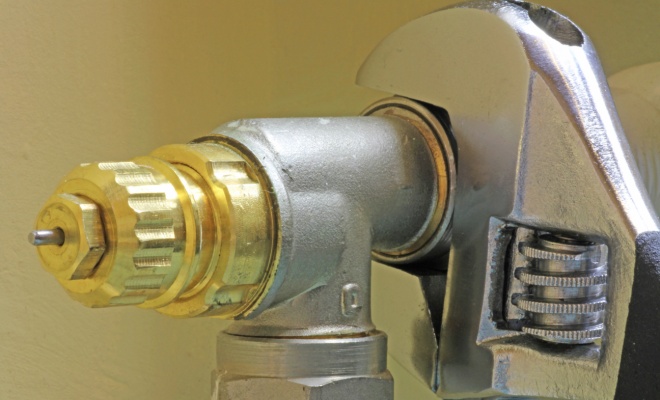
Before you decide on a central heating system power flush, you need to make sure you check everything including your radiators and whether they are balanced, see if your pipes are leaking and also check your inhibitor levels, as this will help you determine if you need a power flush or another repair method.
Before checking inhibitor levels, you should make sure that any inhibitor chemicals have been left to circulate in the system for at least an hour before conducting a test. To complete the check, a water testing kit is usually required, which is normally included in a power flushing kit. This will usually include a test tube, a shade chart and water-testing tablets. The latter should be placed in a container full of system water.
The tube will then be plugged and shaken thoroughly, then left to stand for around 10 minutes and shaken periodically. Once the time has passed, you should then compare the colour of the water to the chart. If the water is a deep yellow then the inhibitor levels are normal, however, if they are a light shade of yellow, your central heating system may require a power flush.
Power Flush vs Chemical Flush
There are two types of flushing processes for your central heating system, including a power flush and chemical flush. Here is a breakdown of the pros and cons of each procedure.
Power Flush
Pros:
- ✔ Improves the efficiency of radiators.
- ✔ Reduces boiler noise.
- ✔ Boost the lifespan of your central heating system.
- ✔ Prevents regular boiler breakdowns.
Cons:
- ✖ Expensive procedure.
- ✖ A power flush can actually cause leaks to occur.
- ✖ Can cause a significant amount of mess for severally blocked heating systems.
Chemical Flush
Pros:
- ✔ Suitable for minor blockages.
- ✔ Low-budget option costing around £100.
- ✔ Can be offered free by some companies when a new boiler is fitted.
- ✔ Does not require a pump to clean the system.
Cons:
- ✖ Will not solve more complicated issues such as large build-ups of sludge.
- ✖ Can only clear away small deposits of debris.
- ✖ You may need to pay out more for a power flush if a chemical flush is insufficient.
What Heating System Can’t Have a Power Flush?
Some systems are not suitable for power flushing including electrical heating systems, as they do not have a tank, so, therefore, cannot be cleaned as thoroughly. To clear blockages, the electricity will have to be switched off to drain the system. When cleaning an electric radiator, you should avoid removing the panels and instead clean around the panels to prevent damage.
Radiators with twin-entry valve cannot be power flushed and are usually replaced with a thermostatic radiator valve (TRV).
To unblock a system with pipework less than 15mm, a magnetic filter may need to be fitted and a cleaner should be added and left for around 2 weeks.
FAQs
Although the flush will cost around£400, the central heating system will run more efficiently and the house will be warmer with lower fuel bills. This price assumes that the level of sludge is not excessive and the removal of individual radiators is not required.
Though in some cases individual radiators will need to be removed and manually cleaned with a high-powered pressure washer due to compacted sludge. This will obviously take much longer and will be reflected in the overall cost.
That being said, if you are using an inhibitor and still need to flush the system more often than once every 10 years, then it’s time for a complete new central heating system! Just getting a new boiler is not a good idea if the radiators and pipes are already badly corroded, bite the bullet, get a completely new system, and use a good rust inhibitor from day one!
However, it may not be debris or scale build-up that is causing the noise, it could be corrosion for example, which will not be cured by flushing, or the noise could be down to any number of other problems.
This could double the price of your power flush as each individual loop of the underfloor heating will need to be cleared and checked.
Power flushing can cause existing weaknesses in your system to worsen. Old pipes or components may fail under the pressure of a power flush, but a qualified tradesman should check these risks before starting the work.
How to Find and Hire a Plumber To Powerflush Your System
When hiring someone to power flush your central heating system, you should expect to pay around £50 to £60 per hour for an experienced plumber. When choosing someone for the job, you should make sure that they have extensive experience in performing central heating power flushing as this will help to avoid any costly mistakes.
You should also check to see if they have public liability insurance which will act as a form of protection for both you and the tradesmen.
Sources
https://www.sentinelprotects.com/uk-en/page/service-support/faq-s










